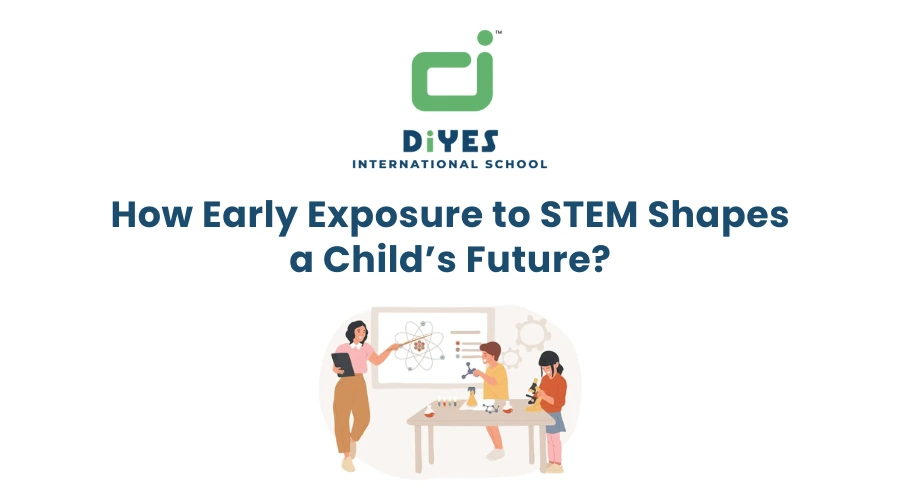Science, Technology, engineering, and mathematics education, better known as STEM, are tagged as the possible solution to the future challenges of the world with high complexities. In the current world that is characterized by an abundance of information, mastery of STEM subjects prepares the student for success in all corporate worlds.
With development in technology and prominence of industries that require innovation, the next generation workforce requires more than mere application of STEM literacy but mastery of skills needed for skilled problem solving, critical thinking, and creativity.

Stem education for kids from an early age impacts the future of children tremendously as well as helps create interest in learning skills that are essential in the future.
A few ways that STEM education can influence prospects in the future
- Pave way for future for students’ careers
- The second goal is to foster students’ citizenship ethics
- Introduce students with modern technology
- The following may be considered the 4Ws of the program: Initializes and establishes the critical skills of its target beneficiaries.
How a Child’s Future Is Shaped by Early STEM Exposure
- Development of the Mind
- Critical Thinking and Problem-Solving: STEM education for kids from a young age prepares children to not only reason and solve problems more effectively but also, through play, build up their reasoning skills.
- Spatial Reasoning: Games such as block sorting or puzzles also help to develop bodily-kinesthetic categories, which will be useful when learning math and science in the future.
- Analytical Skills: When a child learns basic coding or when one is learning how a simple machine works, then he or she is learning cause and effect relationships, hence enhancing logical thinking.
- Curiosity and Exploration: Youth gain one of the most important skills throughout their learning process, which is curiosity and inquisitiveness, learning on their own.
- Social and Emotional Growth
- Teamwork and Collaboration: Children get to know how to share, come up with a synergy of ideas, negotiate, and worse, manage conflicts, hence developing in their social-emotional realm.
- Confidence and Resilience: Getting out of the classroom and working through both successful and unsuccessful engineering projects provides children with an appreciation of personal accomplishment, which fosters self-confidence whenever they are faced with hurdles or failures.
- Fostering Inclusivity: Integrated STEM education for kids from an early childhood has a det.echo effect of reducing gender and societal diversity bias where both boys and girls embrace sciences, technology, and engineering professions.
- Employment Possibilities
- Preparation for Future STEM Careers: The foundation for success in tomorrow’s careers, including software development, robotics, health care technology, and engineering, is established through early STEM education for kids. The rapid growth and demand for STEM careers place these professions among the highest-paying and fastest-growing occupations.
- Transferable Skills: The skills that are obtained in the STEM learning process, like analysis, critical thinking, innovation, and problem-solving skills, are highly appreciated by different organizations from nearly all sectors, including the business and medical fields.
- Increased Interest in STEM Fields: Reduced teacher subjectivity hinders children from joining STEM programs, and as a result, more STEM degrees and professionals will be produced to meet the market demand.

- Inventiveness and Entrepreneurial Thought
- Creative Problem Solving: STEM education for kids fosters a positive attitude in problem-solving dimensions to help children to think creatively and embrace entrepreneurial disposition.
- Inspiring Future Innovators: Specific STEM manipulations can develop a child into an inventor or an entrepreneur, design new technologies, or start his or her business.
- Real-World Applications: As shown in the case, young children given a head start in STEM are in a direct position to apply knowledge into solving real-life issues and even come up with innovative ideas that will benefit society.
- Breaking down Barriers and Promoting Equity in STEM
- Access to Opportunities: Pre-schooling in STEM fields can assist in putting all students, especially those from the low-income or underrepresented groups, to equal start, a very important step in their training for STEM courses.
- Leveling the Playing Field: Through these programs, we are able to open doors through STEM exploration to children from different backgrounds than traditional STEM workers, thus creating opportunities for increasing the employment of more diverse STEM workers.
- Identifying Talent Early: Early intervention must be encouraged and implemented early enough in order to identify and develop talents in students who would otherwise have little or no opportunity to learn and access sophisticated developments and learnings in science, technology, engineering, and mathematics.
- A lasting passion for learning
- Fostering Intellectual Curiosity: STEM education at an early age keeps children interested and excited in the knowledge that allows them to learn more science and technology concepts as they grow up.
- Academic Continuity: STEM activities are fun for children at early ages, and this will make children pursue higher education in STEM and be lifelong learners in STEM-valued areas.
- Encouraging Self-Directed Learning: Peculiar interest makes children run for more STEM learning on their personal accord, thus meaning that early experiences build curiosity and self-drive.
Principles contributing to STEM approach
Top international schools in Trivandrum know that STEM education fosters moral values and character postures relevant to reasonable conduct and science. Thus, it promotes the emergence of ethical citizenship.
- Be curious in researching: Engaging subject anxiety in the environment and autonomous motivation.
- Be honest in recording and reporting: Adhering to standards of ethical practice and objective narration when recording observations as well as experimental results.
- Be objective: the ability of recording data closely and observing occurrences and events freely and rationally.
- Be open-minded: being open-minded, adaptable, and ruling by facts.
- Be diligent and persevere: persistence, readiness to receive feedback, and ability to solve difficulties.
- Be systematic: carrying out activities properly and in a manner that is properly timed to do properly.
- Be cooperative: sharing teaching ideas and learning experiences in activities and experiments.
- Be responsible: Responsible means keeping a safety line and taking account of the possible outcomes of each action.
- Be precise: methodological issues on how to increase the odds of realistic measurement and data acquisition.
- Take appropriate risks: Open-mindedness specifically to scientific, technology, engineering, and mathematics fields and products.
- Make ethical decisions: Assessing decision options respecting ethical standards.

Added benefits
So far as prospects of STEM education are concerned, they get introduced to and interact with many of the existing modes of technology, theories, and practices that familiarize them with the existing IT environments.
Through practical application and exploration, students get to know various facets of modern technology, including:
- Technology systems: With the help of several systems, learners can operate in digital spaces, perform assignments jointly, search for information, and share content with others, as well as adopt basic measures to ensure cybersecurity. Such systems are operating systems, learning management systems, virtual systems, and network systems.
- Software application functions: completing formatting and editing tasks, file organization, patterns of keyboarding, and data storage necessary for optimizing flow within digital documents.
- Troubleshooting: fixing simple problems with the physical components of a computer and correcting coding problems using logical methodologies.
- Function and purpose: such as assessment or selection of methods that may be suitable for scientific research or design engineering tasks. It also encompasses the use of technology applications and devices, as well as online pro environments, in collaborative working, analysis, and communication.
Conclusion
Everyday experiences in STEM education foster favorable early educational impacts on a child’s thinking, feeling, and social well-being, and problem solving, analysis, and collaboration skills. It equips the children for their future opportunities in expandable fields of the future, such as engineering, computer science, and the health sector, and innovation, creativity, and entrepreneurship. It spearheads equity as it removes economic, ethnicity, and gender barriers to vulnerable groups, such as children, so that each can have a shot in STEM fields.
Before anything else, DiYES International ensures that early education in STEM fosters and develops passion and a sense of wonder while preparing children for personal as well as academic and career successes in today’s constantly advancing environment.


